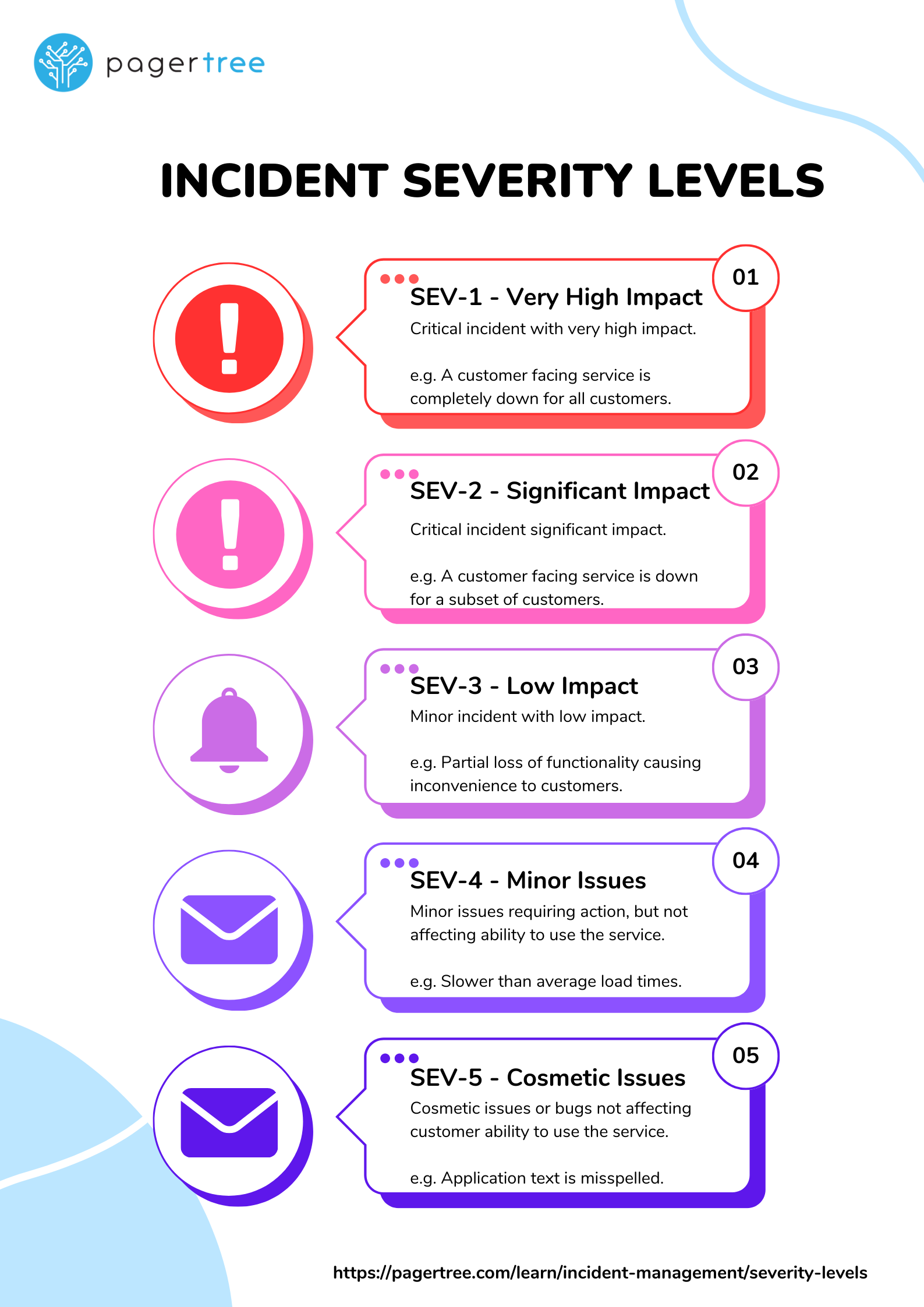Severity Levels
What are severity levels?
Incident severity levels measure the impact an incident has on the business. Severity levels are useful for quickly understanding and concisely communicating the impact of an incident.
Incidents can be classified by severity, usually a "SEV" definition. Severities rank from SEV-1 to SEV-5. The lower the severity number, the more impactful the incident. Anything above a SEV-3 should automatically be considered a "major incident".
tip
Always assume the worst - If you are unsure which severity an incident should be, treat it as the higher one.
| Severity | Description | Example |
|---|---|---|
| SEV-1 | Critical incident with very high impact. | A customer facing service is completely down for all customers. |
| SEV-2 | Critical incident with significant impact. | A customer facing service is down for a subset of customers. |
| SEV-3 | Minor incident with low impact. | Partial loss of functionality causing inconvenience to customers. |
| SEV-4 | Minor issues requiring action, but not affecting customer ability to use the service. | Slower than average load times. |
| SEV-5 | Cosmetic issues or bugs not affecting customer ability to use the service. | Application text is misspelled. |

Incident Severity Levels Cheat Sheet